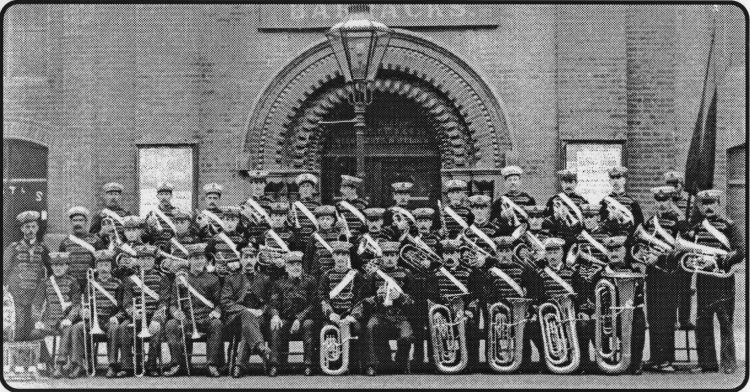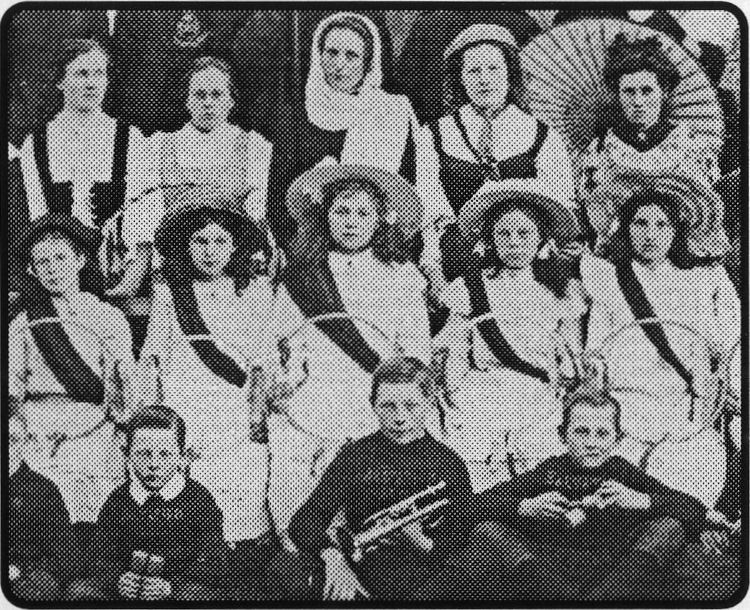
Published 18 April 2002


Shameful
NINETY-five years ago a remarkable exhibition of photographs, paintings,
maps, posters and documents in the Lady Sassoon Room, of the Public Library,
painted a graphic picture of what Folkestone was like in the days of our
great-grandfather's and their often large families.
It was Folkestone at the dawn of the machine age, as many interesting old
pictures demonstrated so well .... a time when a fledgling railway system
was sending out new tracks like the strands of a spider's web.
One section showed how narrow many of the streets and alley-ways were, often
crammed in a small space in the old town. And some views, such as those of
Dover Street, Radnor Street (once known as Fisherman's Row), Eastbrook
Street and Dover Lane - some swept away by re-development
- were a reminder of the old fishing village from which modern Folkestone
developed.
Many of the town's worthies of the nineties were to be seen in a photograph
of the unveiling of the new Town Cross, on the base of the old one in the
parish churchyard.
It was there that mayors of Folkestone were elected through the ages.
Under the heading of "Transport" the march of progress passed from a picture
of the vessel "Alert," a hoy, of Hythe, which plied between London and Hythe
every ten days, to stage coaches, once the most convenient means of travel
to London, apart from the early steamers or fast coastal sailing craft.
There was a printed summons brought against a John Richardson for "plying" a
"certain carriage on wheels" between Folkestone and Deal. It is not clear
what the offence of plying was, but he was found not guilty anyway!
Old photographs, postcards and newspaper reports illustrated that well built
four-horse coaches, like the "Active," run by Frank Funnell, were still in
use as late as 1914 or so, on local routes such as Folkestone to Canterbury
back.
But these were but an echo of a bygone age before the motor car had been
invented.
A report on the library exhibition tells of a fascinating old photograph of
one of the old horse buses which ran between Shorncliffe, Cheriton, Central
Station and Folkestone, while more modern views depicted the old 'Yellow
Pots" and other early motor coaches that were actually built in Folkestone,
Sandgate, Dover or Canterbury.
A more leisurely pastime was illustrated by an early view of what must have
been the first Folkestone cycling club, with a group of men all mounted on
huge tricycles with two big wheels, like those of a penny-farthing, at the
back, and a tiny wheel in front.
‘Skeleton Army’
What particularly interested me was a reference to interesting old posters,
ranging from announcements of joyful entertainment to events of a more
sinister kind, with glimpses of the astonishing persecution faced by the
fledgling Salvation Army as it sought to do its social work in Folkestone.
One bill of 1883 recalls the “Sally Army" battles with the 'Skeleton Army,"
as their violent opponents in Folkestone were dubbed.
The poster proclaimed that the mayor had received "a numerously signed
memorial," asking him to convene a public meeting to consider what steps
could be taken to put a stop to the procession of the Salvation Army members
through the street.
From what I have read of the history of the "battle" faced by the Salvation
Army trying to go peacefully about its work, there was a great deal of mis-
placed hatred directed at these hard-working people, probably because of
their warnings about drink and the poverty it caused in days gone by.
Mob law
Folkestone Salvation Army bandsmen in the early 1900s, a photo shown to me
by local history enthusiast Peter Hooper. Below are some of the local
songsters.
“FROM Our Files,” in March looked back to 1952 when Pfizer started up in
Folkestone and reader Mrs Helen Duke, of Denham Close, Dymchurch tells me
that on March 25 this year, there was a highly enjoyable reunion for old
members of staff who worked in the town until 1964, when work switched to
the Sandwich site. “We had a brilliant day at the Imperial Hotel, Hythe,
being fed and watered with luscious food and loads of personal memories - a
real “Red Letter Day,” she said.
Reports tell of Salvation Army members having to worship and spread the word
of the gospel in fear of their lives, as they were showered with sticks and
stones and all manner of missiles by a rioting mob as they went about their
lawful business.
So bad did this get, that at times they had to barricade themselves inside
their meeting places.
And one town mayor seems to have been dead set against them.
Happily he was advised, or should that be warned (?!!!) that the Salvation
Army had a right to hold processions.
The Town Clerk, Mr W.G.S. Harrison, a lawyer, told him - "Those who attempt
to stop such processions by force, and who, with that object, indulge in
violent and riotous conduct are the persons who are acting illegally."
I suppose it is natural to be suspicious of something new, whether it be a
new religious sect, or an invention - and so it was in Folkestone.
 |
Beauty is sacrificed for profit by builders, claim
<f QAA BEAUTY was being sacrificed for profit, claimed our writer Felix,
complaining about the style of some of the modern architecture in the
town which, he said, was in poor taste and rather dull, heavy and
wanting in relief. : Some things, it seems, never change! Felix was
watching the progress of development, particularly in the East Cliff
area and commented on rapid growth at Wear Bay Road. The demand was
such, he said, that the builders coutd barely build new houses quick
enough. They were being occupied as soon as were completed. It was the
same story in the Greenfield Road area and at Morehall estate. At the
same time, people were asking when there would be a decent road to serve
East Cliff estate. And Felix was calling on the South Eastern & London &
Chatham railway companies to organise special railway steamer trips to
take passengers to see the great Coronation Naval Review at Spithead, at
the end of June, which, he said promised to be one of the grandest
spectacles the world had ever seen. He speculated that hundreds of
people in the Folkestone area alone would be keen to see this display of
Royal Navy ships.
|
Flashback: Hie day a thief s ear was nailed to a post!
at Q07 ROUGH justice in Lydd in the distant past JLXjdL I was one of the
themes of the Herald notebook writer’s column 75 years ago. Feiix told
how a pickpocket was taken to Lydd High Street and his ear nailed to a
post or cartwheel — that was back in 1475. The “Chamberlain's accounts”:
for that year in Lydd recorded that someone was paid 12 old pence, which
must have been quite a sum in those days, for nailing the ear of a
Thomas Harris. But he was given a chance to decide his own term of
‘Incarceration’ - he was handed a knife with which to cut himself free!
The 12-page Herald reported the formation of the Council for the
Preservation of Rural England to preserve the rural scenery and
amenities of the rural community. Folkestone and Hythe MP Philip Sassoon
told the newly formed Light Aeroplane Club for East Kent, based at
Lympne, that although the Air Ministry welcomed the formation of such
clubs, where people could learn to fly, there was little hope of a
government subsidy. Back in 1891, the year the Folkestone Herald
newspaper was first published, it was reported the Town Council turned
down a plan by the Vicar of Folkestone to build a working men’s dub on
the site of the famous Bayle pond. The Council was told It hadn't the
power.
|
Urgent pleas by Mayor to find jobs for unemployed
QCOAS the Shepway area faced up to the ±99^ problem of unemployment,
with 800 looking for work 50 years ago there were hopes of utilising one
local resource, clay, to revive: an old local industry, of brick making.
The Mayor stressed that the district desperately needed a share in
Government orders, and particularly some engineering work for men. And,
he said, there was something wrong when the country needed more
production and yet in Folkestone there were skilled men without work,
such as 29 carpenters. It was wrong that middle aged men were ‘retired’
who wanted to work, and wrong that many boys were leaving school and not
learning a trade, or having to leave town to find suitable work. His
plea was “We ask for an opportunity to help the nation, and to add to
the prosperity of the town by employing many of our people on production
that will increase exports and help re-armament. Did you know, asked a
Herald writer, looking back with some nostalgia, that in 1911 “you could
go out for the evening with a shilling (5p) In your pocket and buy four
packets of Woodbine cigarettes, drink four half-pints of beer, take in a
trip to the theatre - and still have enough left over to buy fish and
chips when you came out?!"
|
Doctor warns of risk to life of hospital rundown at RVH
«| 0*7*7 A LOCAL doctor slammed the rundown ol JL«7 If Folkestone’s only
hospital, saying it was a major blunder and would put patients' lives at
considerable risk. Dr Ernest Lonbay, of Fairfield Road, New Romney,
attacked the secrecy of discussions on the rundown, held behind closed
doors. The ambulance trip to the new William Harvey hospital, at
Ashford, took at least 25 minutes longer than to the RVH at Folkestone.
“Surgical emergencies, major accidents and serious medical cases, such
as coronaries,” he warned “must be at greater risk.” A massive strain,
too, would be put on the ambulance service. Strong protests were being
made against the Southern Water Authority's plans to take 65,000 cubic
metres of shingle from Jury’s Gap Road site, at Lydd Ranges, for coast
protection work elsewhere. And there doubts whether the shingle dumping
would be anywhere near as effective as an admittedly more costly sea
wall, the cost of which was put at £2.5million. Sympathising with
protesters MP Albert Costain suggested that if shingle was to be
extracted from the beach it should be carried not via busy narrow roads,
but on an extended rail track from Dungeness Point to Appledore
Junction. Angry ratepayers said previously dumped shingle had drifted
the wrong way -towards the golden beaches of St Mary’s Bay and Dymchurch
to the detriment of the popular sands.
|
|



